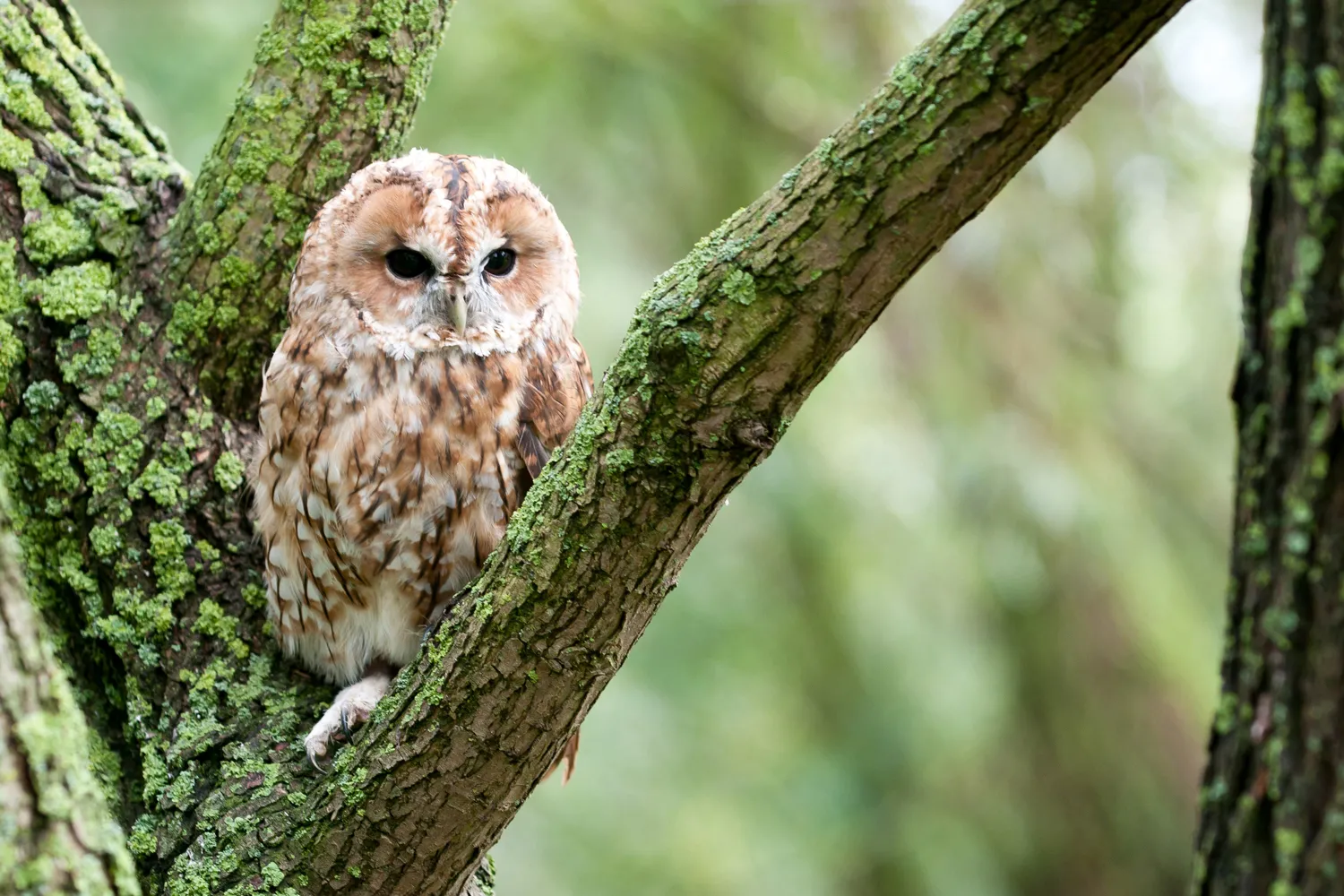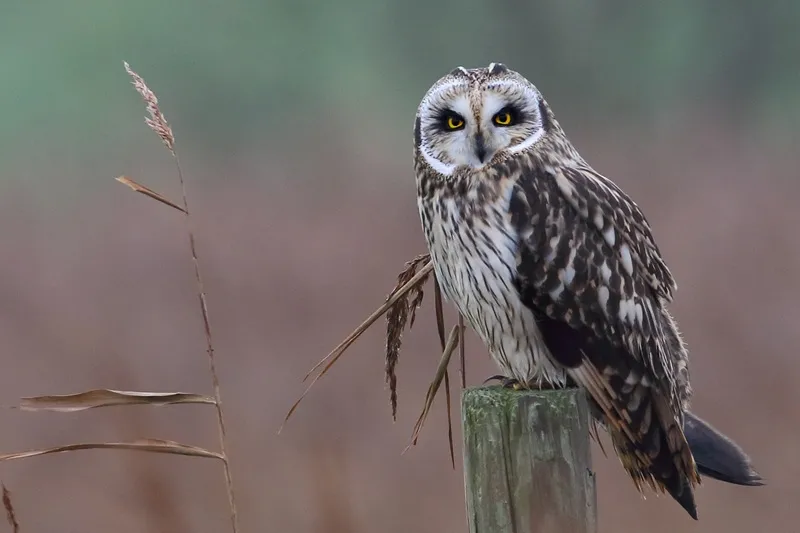Project Owl was a set of interrelated research and associated engagement activities on our nation’s owls primarily during 2018 and 2019 with some aspects ongoing. With your help, we set out to learn more about owls in this country. Over 11,000 volunteers took part in our citizen science surveys. Although Project Owl is official completed, we continue to carry out important research into Short-eared Owls.
Background

Although the distribution of Tawny Owl has changed little over the last 40 years, Breeding Bird Survey data suggest that the population is declining.
We started the Project Owl research by repeating two specially-designed Tawny Owl surveys carried out more than a decade ago to find out more about their patterns of occupancy/abundance and how they use different habitats.
You can find out more information about the Tawny Owl Point Survey and the Tawny Owl Calling Survey on their respective webpages.
Data collected for Bird Atlas 2007-11 has shown a worrying contraction in geographical range, and decline in abundance for Short-eared Owl. This species shows the second greatest decrease in absolute number of 10-km squares in Scotland between 1988/91–2008/11.
We urgently need to learn more about its breeding ecology and movements outside of the breeding season. The results from the most recent set of tracking data are expected in the near future so keep an eye out for exciting news on this subject which we hope to build on with future tracking.
Long-eared Owl is one of our most poorly monitored species in Britain and Ireland. We know how its range in different areas has changed from atlas work, but there is no information on population trends. A small number of volunteers already undertake local studies during the breeding season to monitor nesting success, and there is potential to build on this.
There is much more to learn about Barn Owl and Little Owl too, neither having been specifically surveyed at a national scale to assess range or abundance since the mid-1990s. There is also a degree of uncertainty around the representativeness of more recent population trends produced by Breeding Bird Survey for Barn Owl and Little Owl because people are less likely to encounter them during the daytime, when this survey is carried out.
Short-eared Owl Tracking Project

ONGOING RESEARCH
BTO’s Short-eared Owl tracking project aims to find out more about their fine-scale habitat requirements in order to provide advice on how best to create and maintain suitable conditions.
We also aim to better understand how factors such as prey, predators and competitors influence how they use otherwise apparently-suitable habitats.
Given their nomadism, we need to know more about their migration strategies, connectivity between apparent populations, and to better understand how they find often variable and patchy resources.
By carrying out this research we will be able to provide guidance to policy-makers and land managers which will help to secure the future for Short-eared Owls and the environments they inhabit.
- More about the Short-eared Owl Tracking Project.
Long-eared Owl research
RECORDS ALWAYS WANTED!
Sadly we are not carrying out a dedicated Long-eared Owl survey at this time but we do encourage the submission of all records to BirdTrack and/or your county bird recorder especially of breeding season records for inclusion in the UK Rare Breeding Birds Panel (RBBP) report to help us better understand these mysterious and underrecorded birds. We hope to carry out dedicated research in the future.
The aim of this research was to gaining a better understanding of the ecological requirements of the very secretive Long-eared Owl by testing field methods for surveys, and by then building the skills and interest of volunteers to promote more detailed studies in those parts of Britain and Ireland of particular importance to the species. This mainly involved volunteers with a particular interest in this species and focused on increasing awareness and reporting rates.
Owl demographic monitoring
This monitoring project involved developing and supporting both new existing volunteer networks to collect larger quantities of high-quality information on aspects of their biology such as clutch size, brood size, laying date and adult survival, which will help us understand the reason for population changes we are observing. Working closely with bird ringers and nest recorders we are carrying out as well as local communities to enhance the ways that their valuable work can inform conservation.
As part of this guidance documents were produced for our box using owls which are included in the Learn about owls pages.
Tawny Owl Calling Survey
COMPLETED MARCH 2019
Thank you to everyone who took part in this survey! Volunteers across England, Scotland and Wales took part in this survey to help us increase our understanding of Tawny Owl calling behaviour and occupancy as well as changes since a similar survey in 2005/06.
It was an easy to take part in with volunteers simply listening out for Tawny Owls for 20 minutes each week, from 30 September 2018 to 30 March 2019, from their garden, local park or woodland. People could even listen whilst lying in bed with the window open! Although the aim was to do as many weeks as possible volunteers could do as many or as few weeks as they were able and still contribute valuable data.
- More about the Tawny Owl Calling Survey
- Results of the Tawny Owl Calling Survey.
Tawny Owl Point Survey
COMPLETED AUTUMN 2018
Thank you to everyone who took part in the Point Survey! This survey involved volunteers visiting random preselected tetrads. The survey was carried out during autumn 2018 and is currently undergoing analysis. Some provisional results from this survey can be viewed here and we hope to release more complete results in the near future.
- More about the Tawny Owl Point Survey
Learn about owls
And demographic monitoring best practice
Don't worry if you're not confident in identifying owl calls or want to learn more. We've got some great pages all about owls, which provide you with all the information you will need. We also included demographic monitoring best practice guidance for bird ringers and nest recorders for box using owls in the learn about owls species accounts.